A Conversation with Bruce Duffie
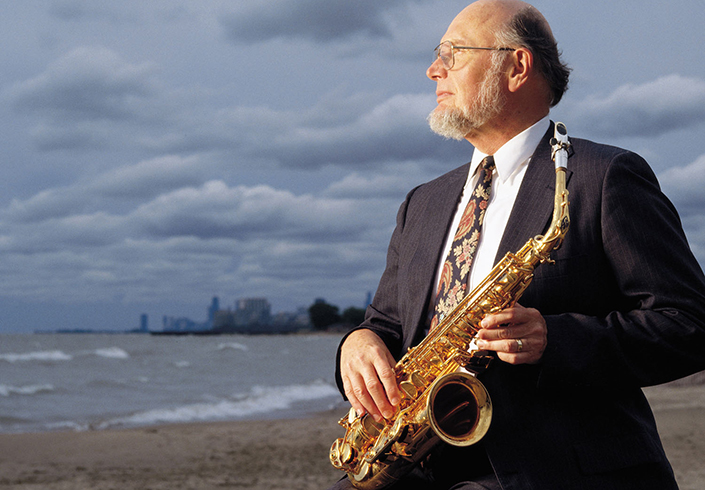

|
Frederick Hemke was born in Milwaukee, Wisconsin, on July 11, 1935. In 1956 he became the first American to receive the Premier Prix du Saxophone from the Conservatoire National de Musique in Paris. Hemke earned a bachelor's degree from the University of Wisconsin-Milwaukee, a master's in music education from the Eastman School of Music, and a doctor of music degree from the University of Wisconsin-Madison. Hemke joined the Northwestern faculty in 1962 and was named the Louis and Elsie Snydacker Eckstein Professor of Music. He chaired the Department of Music Performance Studies until 1994 and served as senior associate dean for administration. After 50 years of teaching, Hemke retired from the Bienen School of Music in 2012 and was named professor emeritus. His career was celebrated in June 2012 with a Saxophone Orchestra Monster Concert at Pick-Staiger Concert Hall, featuring some of the world’s premier saxophonists, many of them his former students. Most recently, Hemke presented a master class for the Northwestern University Saxophone Studio in November 2018. An internationally recognized saxophonist, Hemke performed and presented master classes and lectures throughout North America, Europe, and Asia. He appeared as a soloist with the Chicago Symphony Orchestra, St. Louis Symphony Orchestra, Minnesota Orchestra, Stockholm Philharmonic Orchestra, Tokyo Metropolitan Symphony Orchestra, New Zealand Philharmonic Orchestra, and Korea Philharmonic Orchestra. Having appeared on many occasions as an invited soloist for the World Saxophone Congress, he also coordinated the event when it was held at Northwestern in 1979. He served as an adjudicator for numerous national and international competitions, and was a visiting professor at the Conservatoire National de Musique in Paris, the Sweelinck Conservatory of Music in Amsterdam, the Basel Conservatory of Music in Switzerland, and several U.S. universities. His recordings include solo albums, chamber music, and six recordings with the Chicago Symphony Orchestra, including Mussorgsky's Pictures at an Exhibition. As editor for the Southern Music Company, he served as a consultant for the Selmer Company and the La Voz Corporation, which manufactures the Frederick Hemke Premium Reed. Hemke received many honors during his distinguished career. In 2004 he was named a Northwestern University Charles Deering McCormick Professor of Teaching Excellence. Other honors include the Northwestern Alumni Association’s Excellence in Teaching Award, the Bienen School’s Professor of the Year award (1987, 1989, and 2002), and the Kappa Kappa Psi Distinguished Service to Music Award. He died on April 17, 2019, at age 83. Hemke is survived by his wife Junita Borg Hemke, daughter
Elizabeth Hemke Shapiro (Nicholas), son Frederic John Borg Hemke (Rachel),
and grandchildren Daniel, Martin, Charlotte, and Peter. A Celebration
of Life was held on Sunday, June 2, 2019, from 1:30-2:30 p.m. at Alice
Millar Chapel, 1870 Sheridan Rd., Evanston, IL 60208 == From the Northwestern University
Website |
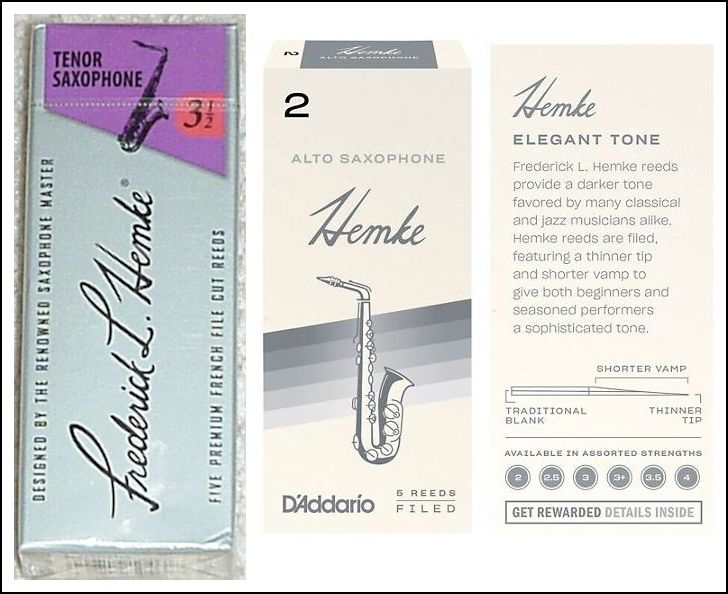 On
the same day that I interviewed composer Frank Ferko (April 20, 2000),
I subsequently had this conversation with saxophonist Fredrick Hemke (pronounced
HEHM-kee). It is perhaps significant that they were with Northwestern
University, my own alma mater. Editing both in August of 2020, I am
not sure I would have remembered that detail from twenty years previous,
except that I began by thanking each one for coming to my home-studio, and
asking about the effects of the weather on their musical output . . . . .
On
the same day that I interviewed composer Frank Ferko (April 20, 2000),
I subsequently had this conversation with saxophonist Fredrick Hemke (pronounced
HEHM-kee). It is perhaps significant that they were with Northwestern
University, my own alma mater. Editing both in August of 2020, I am
not sure I would have remembered that detail from twenty years previous,
except that I began by thanking each one for coming to my home-studio, and
asking about the effects of the weather on their musical output . . . . .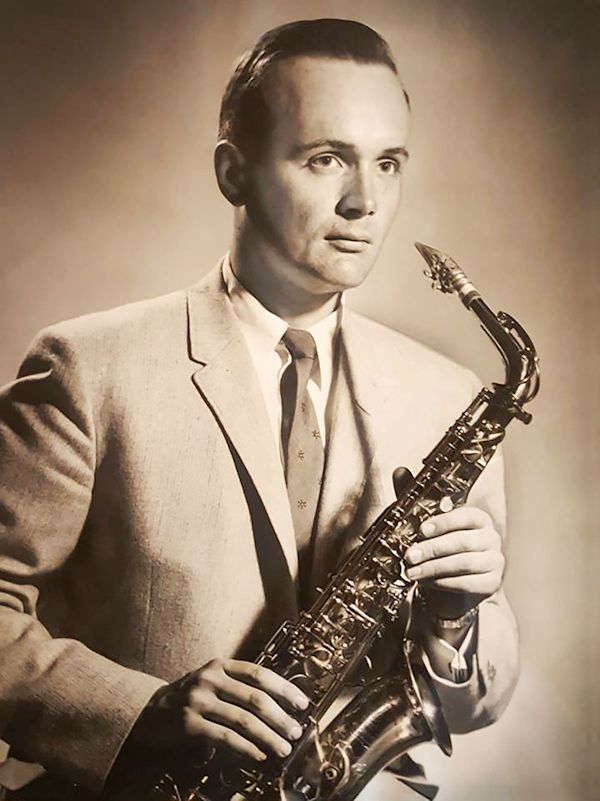 BD: We’ll
come back to students in a minute, but in your own playing, it’s the
development of the pure sound, is it not?
BD: We’ll
come back to students in a minute, but in your own playing, it’s the
development of the pure sound, is it not?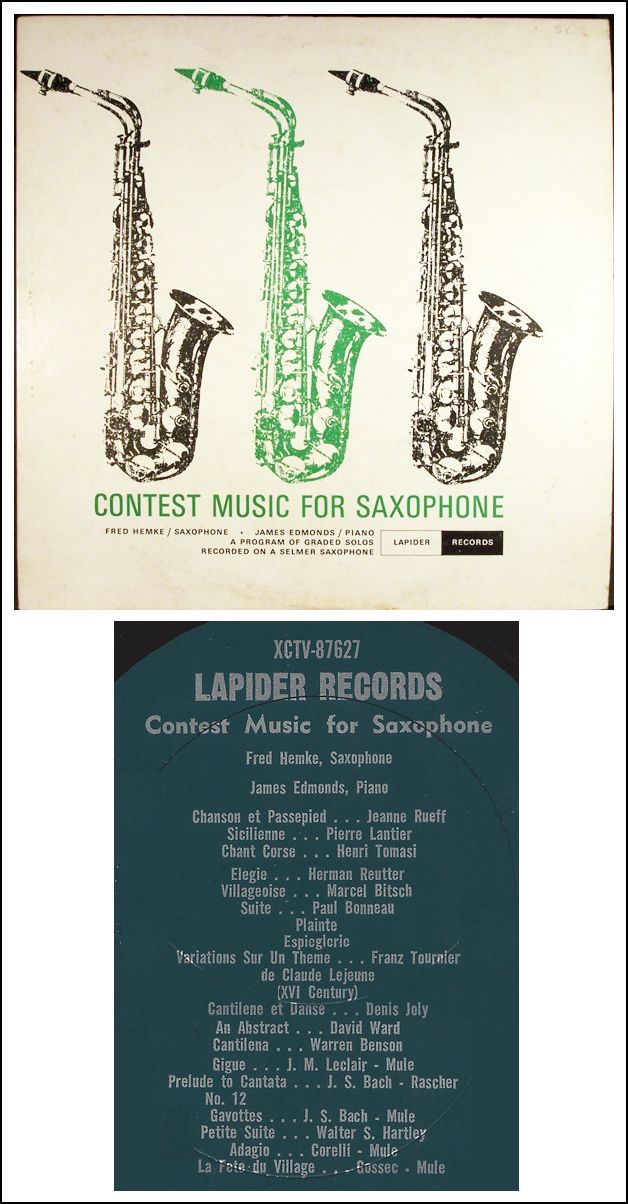 BD: Does all this proliferation of
saxophone in the concert repertoire surprise you at all?
BD: Does all this proliferation of
saxophone in the concert repertoire surprise you at all?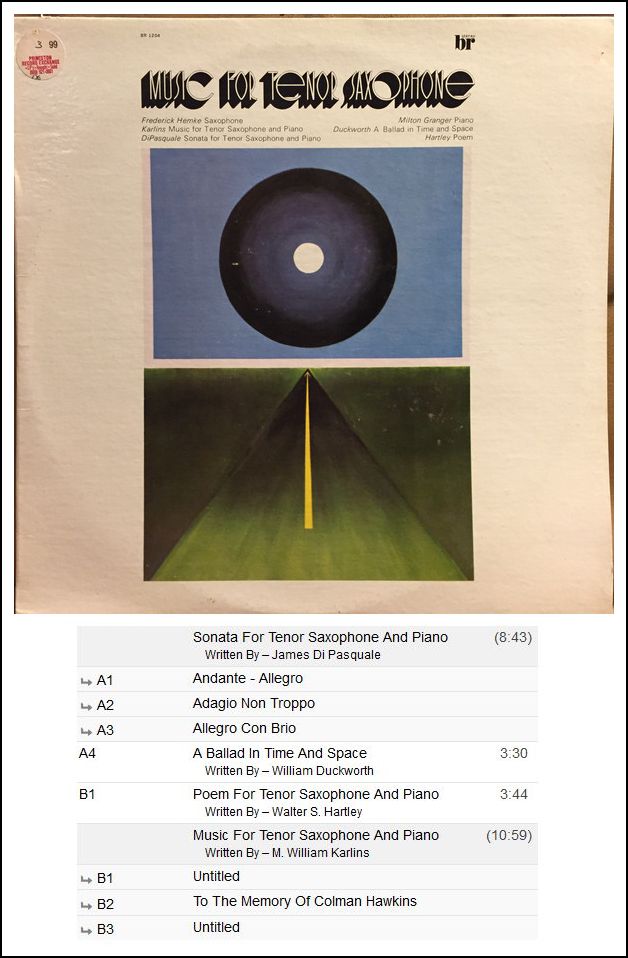 BD: A few measures here and a few measures there???
BD: A few measures here and a few measures there???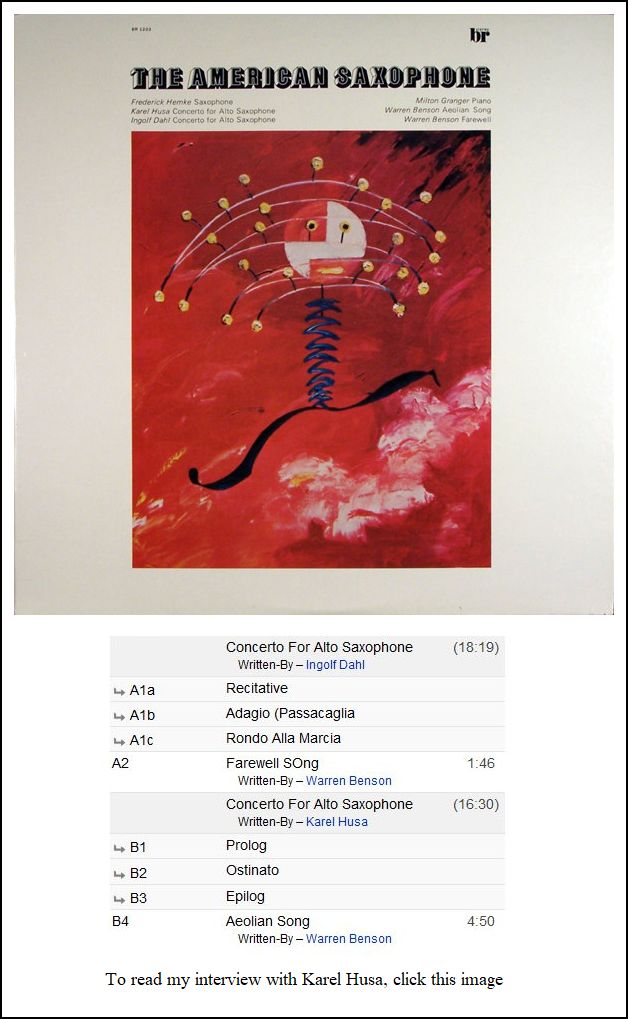 BD: Let’s talk just a little bit
about music. I’ll start with the real easy question... What’s
the purpose of music?
BD: Let’s talk just a little bit
about music. I’ll start with the real easy question... What’s
the purpose of music?[At this point we stopped to take care of a few technical details, and I asked his birthdate.]
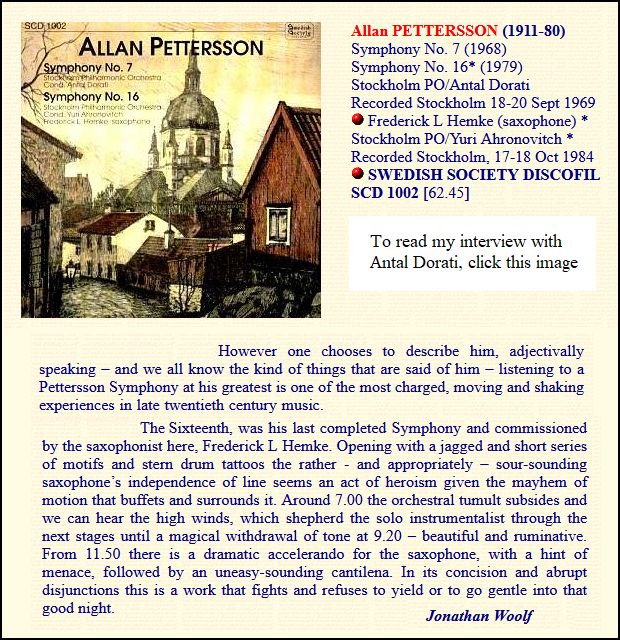 BD: Are you optimistic about the future of (a) music,
and (b) the saxophone?
BD: Are you optimistic about the future of (a) music,
and (b) the saxophone?
New Haven Symphony Orchestra fetes noted composer and sax professorDonna DohertyNEW HAVEN >> The New Haven Symphony Orchestra will be shaking off the winter doldrums Thursday with Wind on the Water, a concert at 7:30 p.m. in Woolsey Hall that might as well be called Celebration. The symphony will honor its 2009-2011 Composer-in-Residence Augusta Read Thomas with a program of her works on the occasion of her 50th birthday, which is April 24. And it will perform the world premiere of Thomas’ “Prisms of Light,” a 20-minute concerto for saxophone and orchestra commissioned by the past and present students of renowned saxophone professor Frederick L. Hemke to celebrate his retirement last May from Northwestern University. Many of them are expected to be in New Haven to hear the Louis and Elsie Snydacker Eckstein Professor Emeritus of Music perform as guest soloist with the orchestra in the work, for which the Hemke Legacy Committee, working mainly through a letter campaign to alums, raised more than $25,000 to cover the commission fee and expenses.“Instead of giving him a silver bowl, they wanted to give him something that would last, something that would honor him,” says Thomas. Hemke’s lengthy list of former students includes many successful musicians and music educators, notably David Sanborn, “Saturday Night Live” saxman Ron Blake and players in most of the U.S. service academy bands. Thomas says the birthday concert idea “was incredibly moving and touching, and I feel incredibly honored and privileged,” but the rest is the proverbial icing on the cake. Shortly after the concert was planned more than a year ago, Thomas
was contacted for the commission, which took about eight months to complete.
It will be recorded at the concert for May release on the Nimbus label.
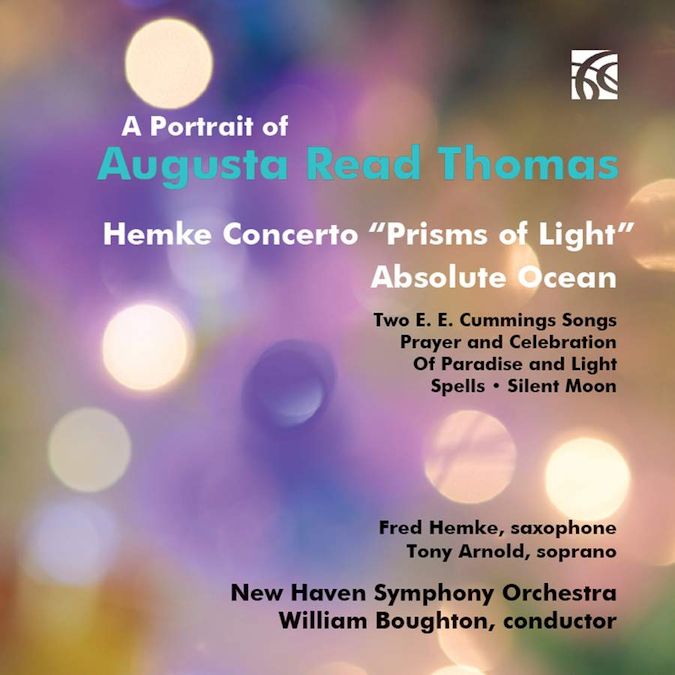
The marriage of the two occasions happened when symphony member flutist Marjorie Shansky, a former Hemke student, told NHSO Music Director William Boughton about the commission. Boughton jumped on the opportunity, saying, “First of all, it was my love of Gusty’s music and admiration for her as a composer that made me want to do it. ... It’s an extraordinary gift. I’m delighted that the NHSO is part of the honoring of this extraordinary career ...” Also on the program are Thomas’ other works, spawned from her love of poetry: two e.e. cummings poems, based on his delightful “sky candy spouting violets” and (“kiss me”), featuring the Elm City Girls’ Choir and soprano Tony Arnold for Thomas’ soulful 2007 work “Absolute Ocean,” based on three cummings poems, and finally, Maurice Ravel’s “Mother Goose.” It’s easy to see why Thomas loves cummings. The word images he paints are so musical and colorful, pure honey for a composer like Thomas. Describing her composing sensibility, she says they have “bright, capricious surfaces like sparklers ... very colorful. It’s not a dark brown, muddy puddle of music at all. You feel bright blues, warm purples and sunshine — definitely a lot of color in my orchestrations, and in every way I would say all optimistic — positive caprice, some whim, some sense of humor, some joy, not dark, contemplating or harrowing.” Thomas felt the pressure of the commission, “knowing it was a legacy” and heeded the professor’s own advice by approaching “Prisms” as if it were a violin concerto to really showcase the instrument. “Prisms of Light” is imbued with a jazzy feel she conveys over the phone by tinkling on a piano and vocally vocalizing some examples that sound like scat singing. Light imagery resonates in all four movements, which incorporate a fast, slow, fast tempo mix of languorous, delicate ballad moments to a staccato back and forth between saxophone and orchestra, and a unique use of percussion with marimba, drums, xylophone and vibraphone — adding colors to the prism “to remain fresh,” she says. It wasn’t a surprise that Hemke’s students gifted him with a new work, because when they asked him what he’d like as a gift, he said “a new concerto for saxophone and orchestra.” But, he says, “What was a complete surprise was the amount of money they were able to raise to get a major composer like Gusty doing a major work like this. It’s amazing.” Hemke, who was acting dean when Thomas was on the Northwestern faculty, was quite familiar with Thomas’ talent. “I knew the kind of writing that she did. It was very special to me that she would accept the commission. To tell the truth, I was interested in having a new work written for the instrument, but I didn’t intend to perform it. But he was so touched that Thomas accepted the commission, that “I thought I’d take the horn out of the case and perform it,” noting that its range and speed are challenging. “It’s going to be interesting for me, because Gusty writes in a very unique way. The concerto is really different than anything I’ve ever played before ... It has a hint of jazz, at least rhythmically.” Says Thomas, “It’s been incredibly meaningful to me to work with this orchestra over the years ... You can’t imagine what it’s like as a composer when someone believes in you and has played your work over so many years. To say this is so moving is almost an understatement.” Donna Doherty is the former arts editor of the New Haven Register. |
|
From an account written by Tristan Willems, founding member of the Adolphe Saxquartette, and a student at Northwestern, what follows below is Cecil Leeson´s personal saga of the genesis of the Saxophone Concerto by Jaromír Weinberger.
|
© 2000 Bruce Duffie
This conversation was recorded in Chicago on April 20, 2000. Portions were broadcast on WNIB the following July. This transcription was made in 2020, and posted on this website at that time.
To see a full list (with links) of interviews which have been transcribed and posted on this website, click here.
Award - winning broadcaster Bruce Duffie was with WNIB, Classical 97 in Chicago from 1975 until its final moment as a classical station in February of 2001. His interviews have also appeared in various magazines and journals since 1980, and he now continues his broadcast series on WNUR-FM, as well as on Contemporary Classical Internet Radio.
You are invited to visit his website for more information about his work, including selected transcripts of other interviews, plus a full list of his guests. He would also like to call your attention to the photos and information about his grandfather, who was a pioneer in the automotive field more than a century ago. You may also send him E-Mail with comments, questions and suggestions.